AMD Ryzen 5 3600 Review: Non-X Marks the Spot
Why you can trust Tom's Hardware
Power Consumption
Power consumption measurements are always a bit tricky. But as long as your 12V supply (EPS) readings, motherboard power supply sensor values, and voltage transformer losses plausibly coincide, everything is fine. Therefore, we're using pure package power to avoid possible influences from our motherboard. Results from the PWM controller are very reliable if you take them as averages over a few minutes.
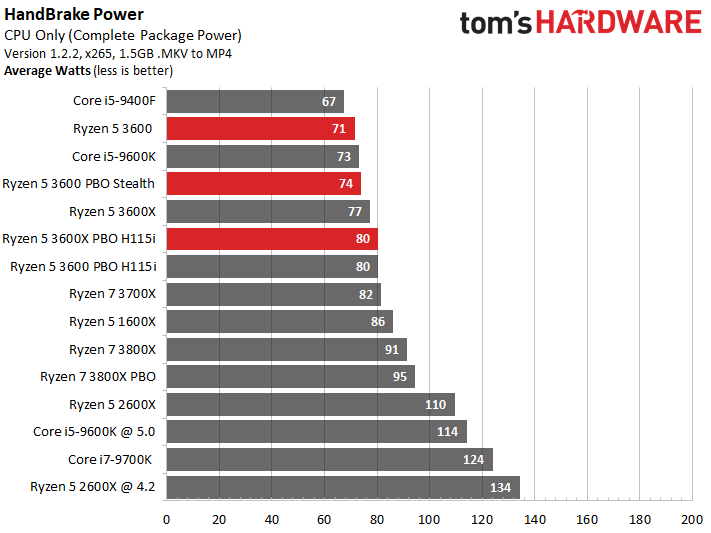

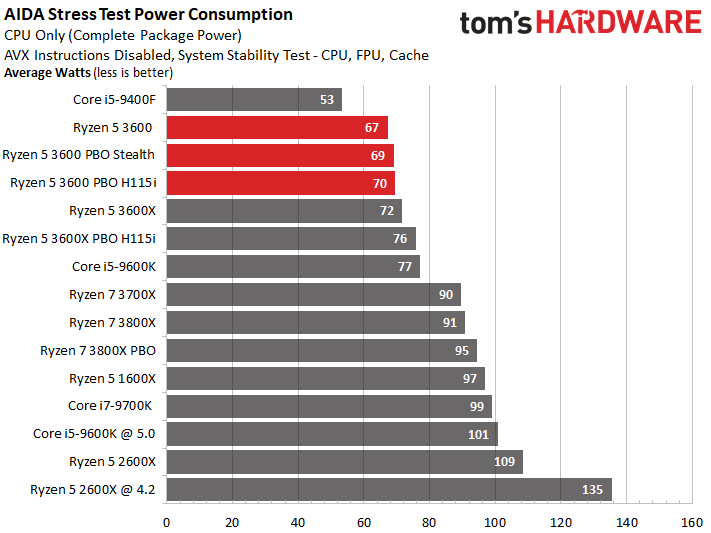
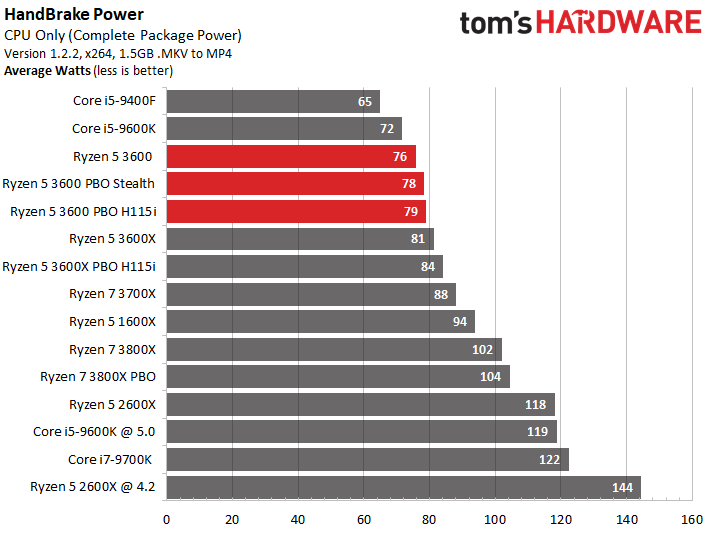
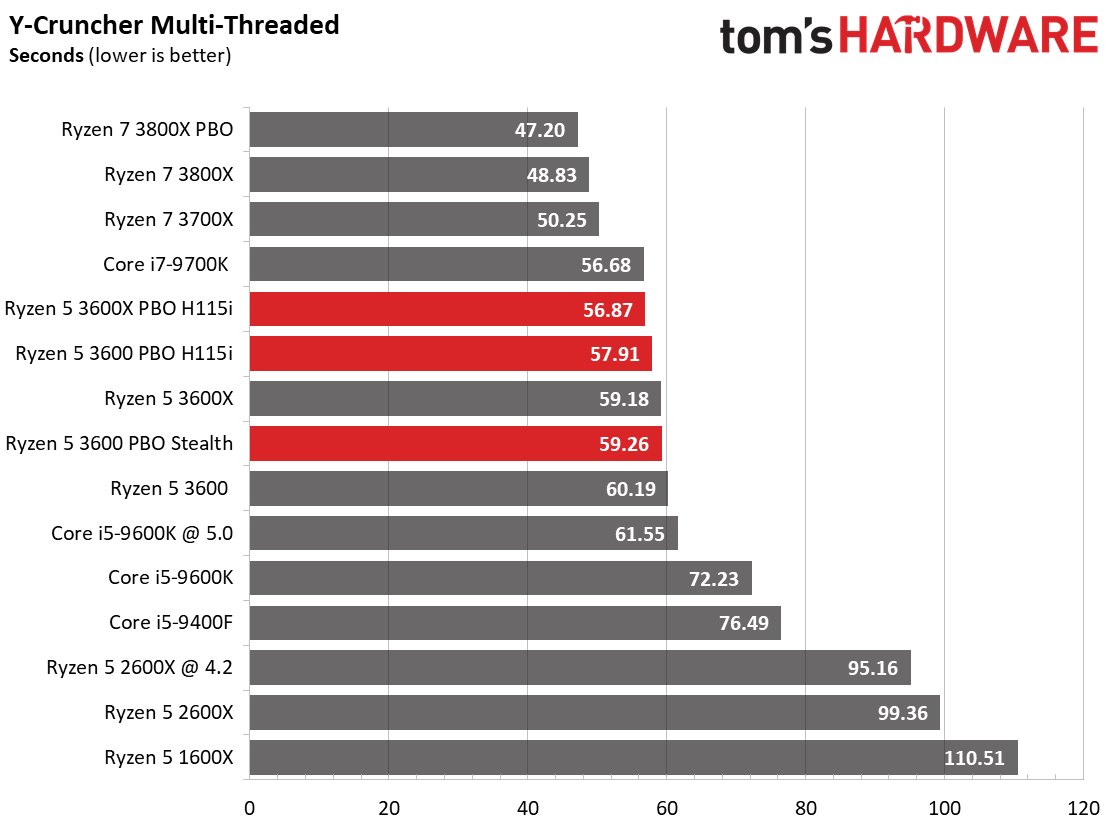

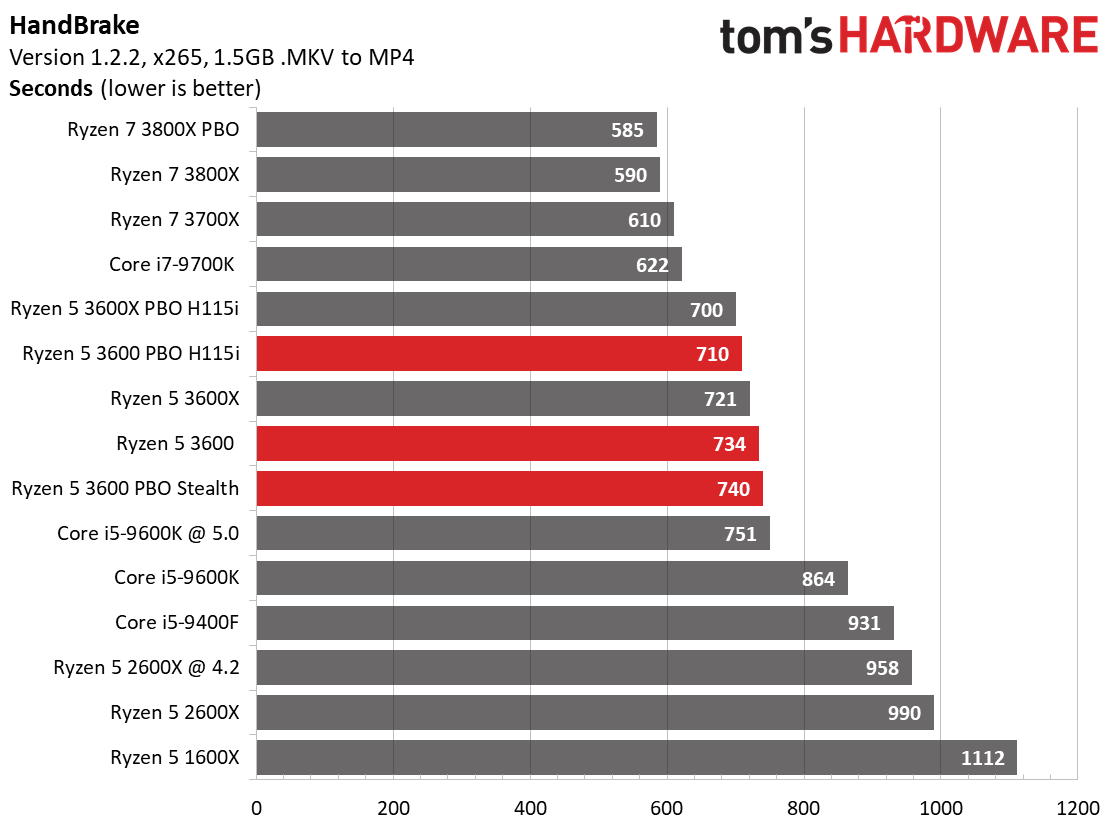
We began with the non-AVX stress test in AIDA64 and found that the Ryzen 7 3600 drew 67W, beat only by the Core i5-9400F at 53W. With PBO active and the Corsair H115i cooler, the 3600 only drew 70W.
The y-cruncher benchmark computes pi using a heavy multi-threaded AVX workload and also generates a performance measurement that we can use for efficiency metrics. We also measure power with HandBrake in x264 and x265 flavors. The latter uses a heavier distribution of AVX instructions than the former, but both transcoders are great for stressing the processor with a real-world workload.
The small increases in the 3600's power consumption from overclocking equate to relatively minor performance improvements. At stock settings, AMD has tuned the processors right at the knee of the voltage/frequency curve where the chip provides the maximum frequency possible and great efficiency. This PBO configuration also retains some of those same characteristics, but that doesn't leave much headroom for explosive performance gains.
Like the Ryzen 5 3600X, the six-core Ryzen 5 3600 is basically an eight-core Ryzen 7 3700X, but with two cores disabled. However, the 3600’s lower 65W TDP envelope equates to less power consumption at stock settings although, after overclocking, the 3600 does come close to matching the 3600X. That leads to surprisingly similar power consumption measurements during our x265 and y-cruncher tests.
We tested with both the stock cooler and the Corsair H115i to see how much extra cooling impacts the maximum performance the auto-overclocking algorithms can extract from the processor, and how that impacts power consumption. According to our measurements, the bundled Wraith Stealth cooler dissipates enough waste heat to nearly achieve the maximum amount of available performance in some applications, but it also doesn't offer much of a boost in others. A better cooler is a good investment if you're overclocking the 3600, but you won't need something as robust as our H115i (even a low-cost Hyper 212 should suffice).
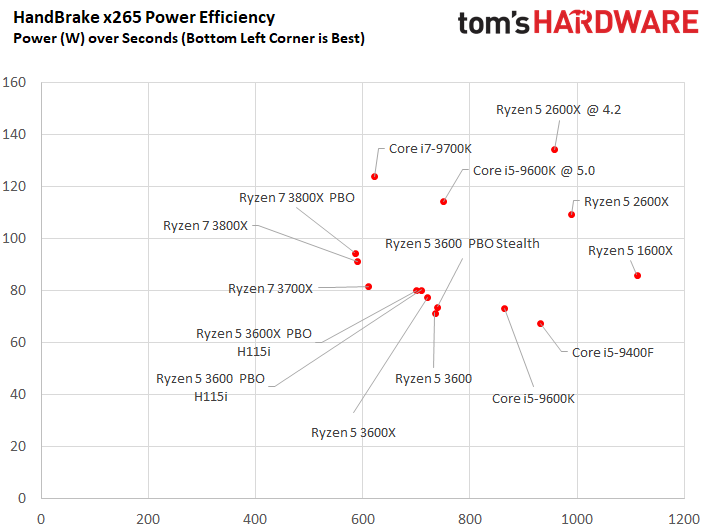
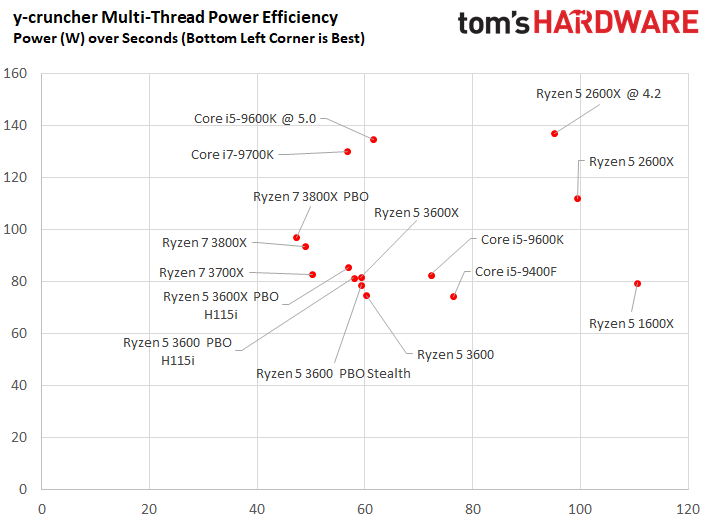
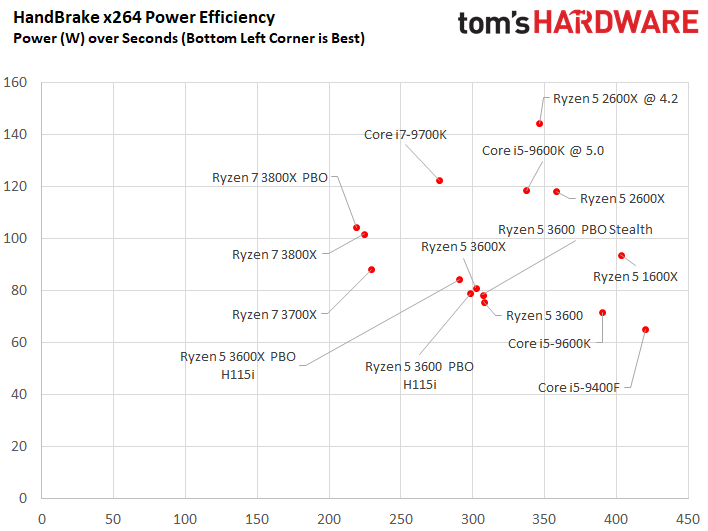
Plotting power consumption over our performance measurements shows that the Ryzen 5 3600 is an incredibly efficient processor, giving a solid level of performance at impressively low power consumption. That low power consumption isn't all about your electricity bill, either; it also equates to a lower bar for your cooling solution.
MORE: Best CPUs
MORE: Intel & AMD Processor Hierarchy
MORE: All CPUs Content
Get Tom's Hardware's best news and in-depth reviews, straight to your inbox.
Current page: Power Consumption
Prev Page Overclocking and Test Setup Next Page VRmark, 3DMark and AotS: Escalation
Paul Alcorn is the Editor-in-Chief for Tom's Hardware US. He also writes news and reviews on CPUs, storage, and enterprise hardware.